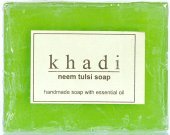Neem: 6 definitions
Introduction:
Neem means something in Hinduism, Sanskrit, Hindi, biology. If you want to know the exact meaning, history, etymology or English translation of this term then check out the descriptions on this page. Add your comment or reference to a book if you want to contribute to this summary article.
In Hinduism
Ayurveda (science of life)
Rasashastra (Alchemy and Herbo-Mineral preparations)
Source: Ancient Science of Life: A Metallurgical Study of Nāga BhasmaNeem or Nimba refers to the medicinal plant known as Zingiber officinale Linn., and is used is in the metallurgical process for creating nāgabhasma, (Jāraṇa step):—The Nirguṇḍī-svarasa-śodhita Nāga (580 g) was subjected to Jāraṇa (6 hours) by melting śodhita-nāga and stirring it with a Neem (Azadirachta indica A Juss.) stick and adding the whole plant parts of Chichiri (Plectranthus coesta L.). The jarita-nāga (620 g) was obtained as a yellow–orange powder.
Cosmetics, Perfumery, Skin care and other Ayurvedic Beauty treatments
Source: Ancient Science of Life: Critical review of Ayurvedic Varṇya herbsNeem refers to the medicinal plant known as Azadirachta indica (Sanskrit: nimba) used in Ayurveda to promote skin care and enhance the beauty of the skin (varṇya).—Neem (Azadirachta indica) is perceived as a beauty aid in India, neem is particularly prescribed for skin diseases and detoxification of blood. The use of nimba as skin whitening agent is not so popular although purified neem oil and powdered leaves are a major component of at least one widely used facial cream and other cosmetics. But recent studies have suggested its utility as skin whitening agent because the methanolic extract of neem bark has shown significant tyrosinase inhibition activity up to 43.59% whereas leaf showed 10.10% activity. Also, the hydro distilled extract of its heart wood has been reported with significant anti-oxidant activity owing to presence of high phenolic content.
Veterinary Medicine (The study and treatment of Animals)
Source: Asian Agri-History: Paśu Āyurvēda (Veterinary Medicine) in GaruḍapurāṇaNeem (in Sanskrit: nimba) is used in the treatment of Horses (Gajāyurveda or Aśvāyurveda) in the Garuḍapurāṇa.—[Treatment of worms, mucous discharges, Intoxication and deranged Vāyu]—A compound formulation made up of powdered paṭola (snake gourd), nimba (neem) leaves, vacā (sweet flag), Citraka (Plumbago zeylanica), Pippalī (Piper longum), Śṛṅgavera (Zingiber officinale) should be administered to the horse with water.

Āyurveda (आयुर्वेद, ayurveda) is a branch of Indian science dealing with medicine, herbalism, taxology, anatomy, surgery, alchemy and related topics. Traditional practice of Āyurveda in ancient India dates back to at least the first millenium BC. Literature is commonly written in Sanskrit using various poetic metres.
Biology (plants and animals)
Source: Wisdom Library: Local Names of Plants and DrugsNeem [नीम] in the Hindi language is the name of a plant identified with Azadirachta indica A.Juss. from the Meliaceae (Neem) family having the following synonyms: Melia azadirachta, Antelaea azadirachta. For the possible medicinal usage of neem, you can check this page for potential sources and references, although be aware that any some or none of the side-effects may not be mentioned here, wether they be harmful or beneficial to health.
Neem [নীম] in the Manipuri language, ibid. previous identification.
Neem in the Bengali language, ibid. previous identification.
Neem in the Urdu language, ibid. previous identification.
Neem [নীম] in the Assamese language, ibid. previous identification.
Source: Google Books: CRC World Dictionary (Regional names)1) Neem in English is the name of a plant defined with Azadirachta indica in various botanical sources. This page contains potential references in Ayurveda, modern medicine, and other folk traditions or local practices It has the synonym Melia azadirachta L. (among others).
2) Neem in India is also identified with Indigofera cassioides It has the synonym Anila pulchella Kuntze (etc.).
3) Neem is also identified with Melilotus indicus It has the synonym Trifolium indica L. (etc.).
Example references for further research on medicinal uses or toxicity (see latin names for full list):
· Journal of Ethnopharmacology (2007)
· Flora Indica (1832)
· Journal of Ethnopharmacology (2005)
· Flora Atlantica (1800)
· Ind. Sem. Hort. Neap. (1833)
· Mém. Mus. Hist. Nat. (1830)
If you are looking for specific details regarding Neem, for example diet and recipes, extract dosage, chemical composition, health benefits, pregnancy safety, side effects, have a look at these references.

This sections includes definitions from the five kingdoms of living things: Animals, Plants, Fungi, Protists and Monera. It will include both the official binomial nomenclature (scientific names usually in Latin) as well as regional spellings and variants.
Languages of India and abroad
Hindi dictionary
Source: DDSA: A practical Hindi-English dictionaryNeem in Hindi refers in English to:—(nm) the margosa tree; (a) half, semi; ~[astina] half-sleeve; ~[jam] half-dead; ~[pukhta] semi-ripe; half-consolidated; ~[raja] half-consent, connivance; ~[hakima] a quack; •[khatara-e-jana] a little knowledge is a dangerous thing..—neem (नीम) is alternatively transliterated as Nīma.
...
See also (Relevant definitions)
Starts with (+10): Neem beej, Neem chaal, Neem chal, Neem chhal, Neem ke khusk pattay, Neem ki chhaal, Neem ki namontian, Neem oil, Neem pan, Neem patti, Neem phool, Neem tree, Neem tuo, Neem-chameli, Neem-gilol, Neem-kauree, Neemba, Neembaro, Neembu, Neemchal.
Ends with: Bhui neem, Bhuin-neem, Burg neem, Burge neem, Ghora-neem, Gul neem, Indian neem, Kaduneem, Maghz tukhm neem, Maghz tukhm-e-neem, Mahaaneem, Mahaneem, Mitho-neem, Moha neem, Patther neem, Vilayti-neem.
Full-text (+442): Nimba, Nim, Padhi-nima, Nima, Hebbevu, Makan nim, Nim kofta, Sapistan nim kofta, Nim beej, Maha nim, Mac nim, Tukhm karafs nim kofta, Ilaichi kalan nim kofta, Darhald nim kofta, Pieu nim, Sipistan nim kofta, Sonth nim kofta, Malla nim, Mallu nim, Nim mathulasi.
Relevant text
Search found 45 books and stories containing Neem, Nim; (plurals include: Neems, Nims). You can also click to the full overview containing English textual excerpts. Below are direct links for the most relevant articles:
Garga Samhita (English) (by Danavir Goswami)
Verses 2.10.11-13 < [Chapter 10 - Description of Śrī Kṛṣṇa’s Herding the Cows]
Bhesajjakkhandhaka (Chapter on Medicine) (by Hin-tak Sik)
Medicines (g): Decoctions/Astringent Medicines (Kasāva/Kaṣāya) < [Chapter 4 - Medicinal Substances in the Chapter on Medicine]
Medicines (c): Leaves (Paṇṇa/Patra) < [Chapter 4 - Medicinal Substances in the Chapter on Medicine]
Medicines (d): Flowers (Puṣpa) < [Chapter 4 - Medicinal Substances in the Chapter on Medicine]
Sahitya-kaumudi by Baladeva Vidyabhushana (by Gaurapada Dāsa)
Text 10.202 < [Chapter 10 - Ornaments of Meaning]
Text 10.93 < [Chapter 10 - Ornaments of Meaning]
The Neem < [April 1971]
Rainbow After < [January – March, 2005]
Shirdi Ke Sai Baba < [January – March, 2000]
Charaka Samhita (English translation) (by Shree Gulabkunverba Ayurvedic Society)
Chapter 7 - The therapeutics of Dermatosis (kushtha-cikitsa) < [Cikitsasthana (Cikitsa Sthana) — Section on Therapeutics]
Chapter 3 - The Purging Cassia (aragvadha) < [Sutrasthana (Sutra Sthana) — General Principles]
Chapter 23 - Impletion therapy (Santarpana) < [Sutrasthana (Sutra Sthana) — General Principles]
The Bhikkhus Rules (by Bhikkhu Ariyesako)
Lifetime Medicines < [Chapter 3 - Possessions And Offerings]
Related products
(+170 more products available)





